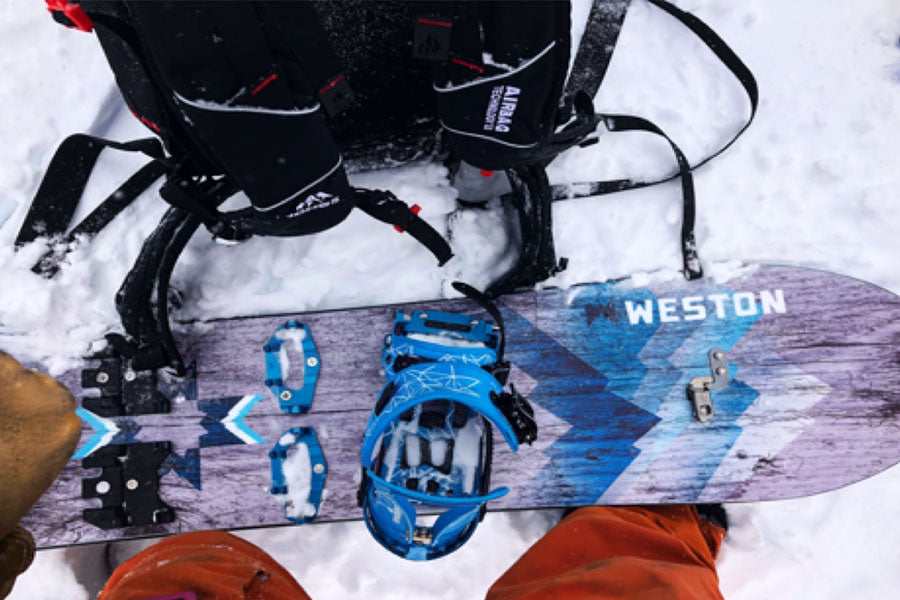January 22nd, 2018
Recently, I spent 48 hours with Backcountry Babes and an awesome group of ladies alongside a few gentlemen learning the fundamentals of staying safe in the backcountry. Beginning my Friday with a 7am wake up call, I gathered my fresh looking gear, grabbed a coffee in town, and headed to the Stephen C. West Ice Arena to commence my learning. Fast forward two days and I could tell you I gained a new outlook on backcountry riding that I would never have observed without an AIARE Level 1 course.
DAY 1
The morning started with introductions, backcountry experience, and goals for the course learning. The majority of my classmates, including myself, had minimal experience in the backcountry, heading out with friends only a handful of times. Spending about 5 hours on powerpoint presentations and lectures, I can attest that my attention span lasted longer than the average 30 seconds. We learned a ton of knowledge, from snow science and avalanche awareness, to navigating through online resources for planning a backcountry trip. Following a quick lunch break, we carpooled up Boreas Pass. Here we had our first trial at companion rescue using our beacons. If you think putting together the probe is hard, try tracking down a buried beacon.
Tip: don’t move to fast with the beacon, you’ll miss your target. Beacon search practice is essential, and only experience can build your search abilities.
Tip: learn how to use CalTopo or Hillmap to understand slope angles and help with trip planning
Tip: Utilize your Blue Book as an outline for each trip.
Tip: Turn your phone to airplane mode or off before turning your beacon on to search
 Skinning up to Francie's Cabin Skinning up to Francie's Cabin
|
DAY 2
The second day, we attempted our first trip planning using the AIARE Blue Book (you receive one in the course) With a persistent slab problem occurring throughout Colorado, our group was fortunate enough to have a “unusual” snow pit testing. We skinned up to Francie’s Cabin, a popular hut outside Breckenridge. Along the way we recorded visual field observations, snowpack angle using a slope meter, and even saw the remnants of a natural avalanche slide. To the side of the path, we conducted our snow pit testing. We utilized various approaches to analyze snow stability including Rutschblock Test and the ECT. To say the least, the snowpack was sitting on sugar snow and slid right into the pit after a few hand slaps. We headed back to the classroom to discuss our insights and prepare for the tour we would take on Sunday. A winter storm watch was coming into the Summit County area and would presumably change the avalanche conditions from moderate to considerable overnight.
Tip: Check CAIC website for updates on snowpack testing in your area
Tip: ECT and Rutschblock tests can be performed at low angle slopes with same results as the steeper slopes above
Tip: Use your the grip of your pole to punch into snow and evaluate snowpack as you are skinning
|
|
DAY 3
On Sunday morning, we met up to evaluate the conditions and choose our route to the Iowa Mine just off the Baldy Trailhead. Carefully considering new snow, aspect, and slope angle, we knew this area was below 30°, making it unlikely for avalanche danger and best for low angle powder turns. We prepared our gear for the skin, then split into two group. When we made it to tree line, we transitioned our skis and boards, anxiously awaiting the powder turns. On our second ascent up the face, we muscled up and attempted a staged companion rescue in knee deep snow. This attempt just further justified the need to continuously practice companion rescue with friends and tour groups. Lunging through knee deep snow to source a beacon is no easy feat, let alone trying to find it with multiple transceivers on-you’ll understand when you take the course!
Tip: Practice multiple burial rescues
Tip: Practice rescues under stress (have someone in your group pretending to panic, in shock, etc.)
Tip: Dig below your victim so that falling snow can be easily removed. Try to find the head first
Tip: Make one person a leader to delegate duties to the others in the group.
CONCLUSION
Choosing to take AIARE Level 1 can be a tough decision for many reasons including price, accommodations, and getting time off from work. With a price tag of ($400-$500) pulling out the wallet can seem daunting. Not to mention, having to find accommodations that work with the course location and telling your boss you need a few days off to fulfill your passion for powder. And, while all these aspects may sway you from committing to a class, it’s nothing in the long run. The AIARE Level One course is invaluable if you are seeking to truly get into backcountry skiing and splitboarding.
5 KEY TAKEAWAYS
1) “Know Before You Go”
2) Practice companion rescue regularly
3) Always choose a leader but be prepared to make group. decisions
4) Learn to understand your snowpacks - be one with the mountain.
5) Plan not only you proposed routes, but your escapes as well.
RESOURCES
If you are looking to take your AIARE Level 1 in the Colorado region, we highly recommend:
Alternatively, if you are out of Colorado, AIARE offers a nice compilation of offered courses here.


 Snow Pit Testing
Snow Pit Testing 

1 comment
Loved reading about your AIARE Level 1 Trip experience!!! Thanks for sharing, and glad you had a great course! ! :)